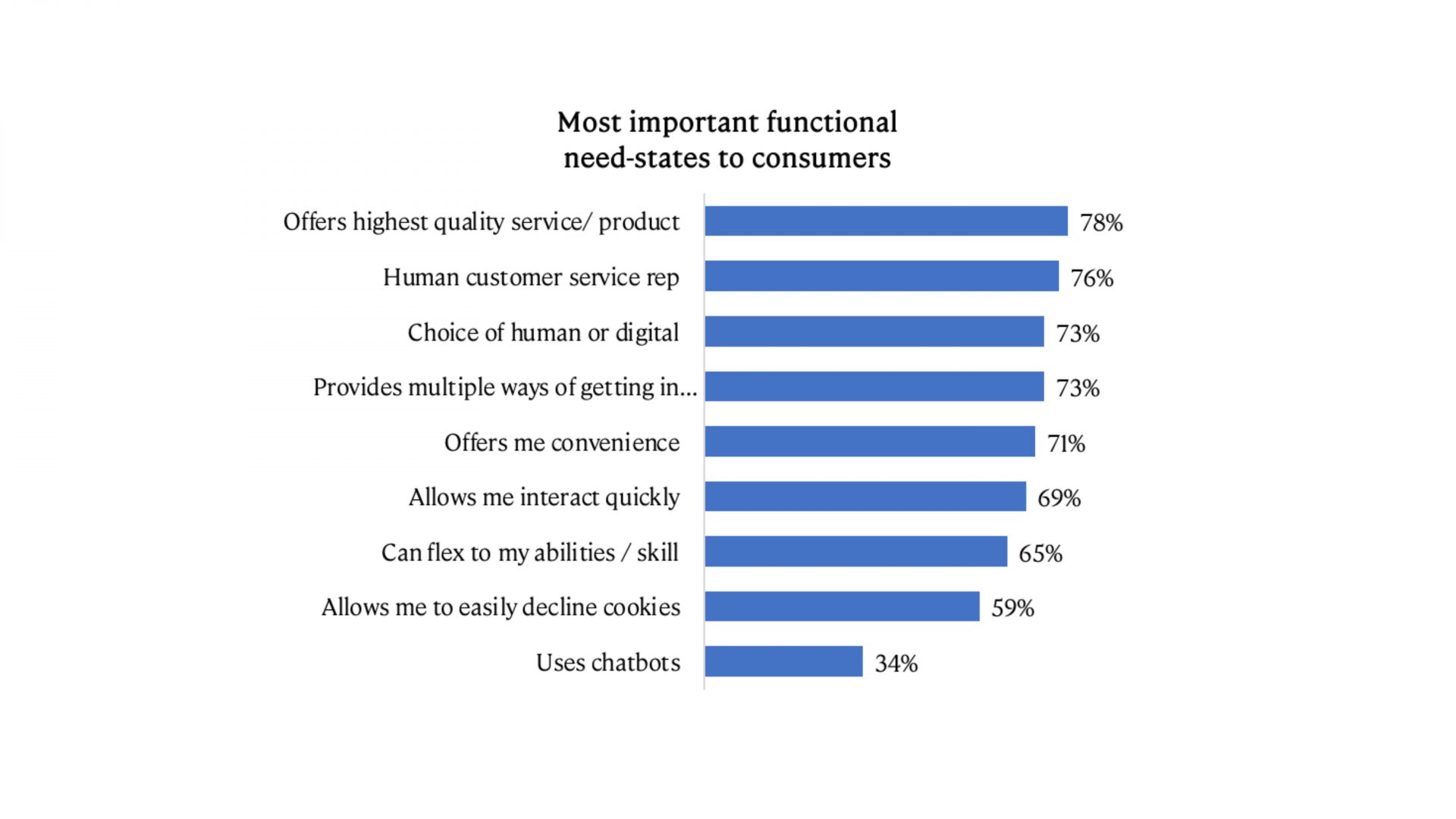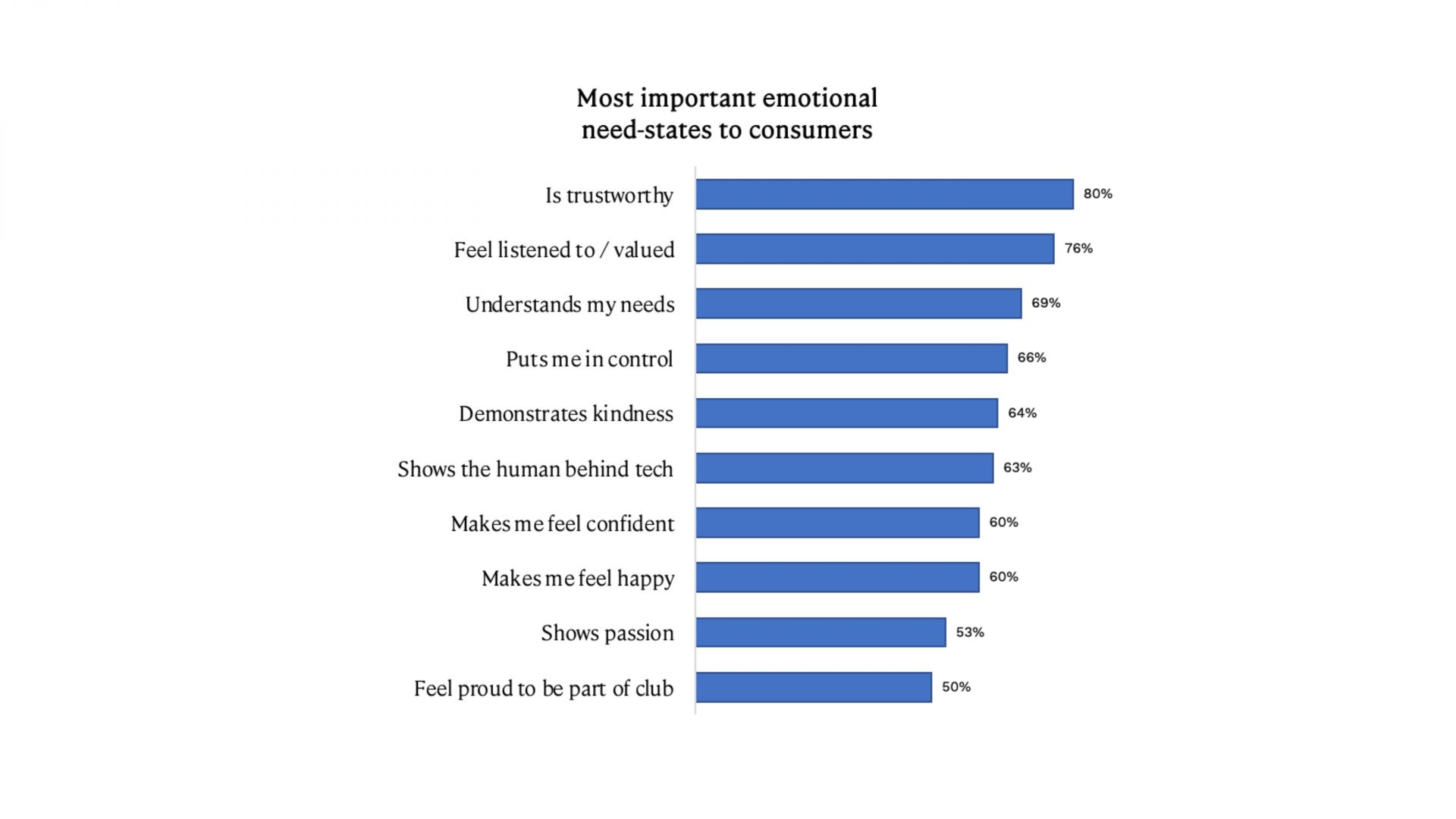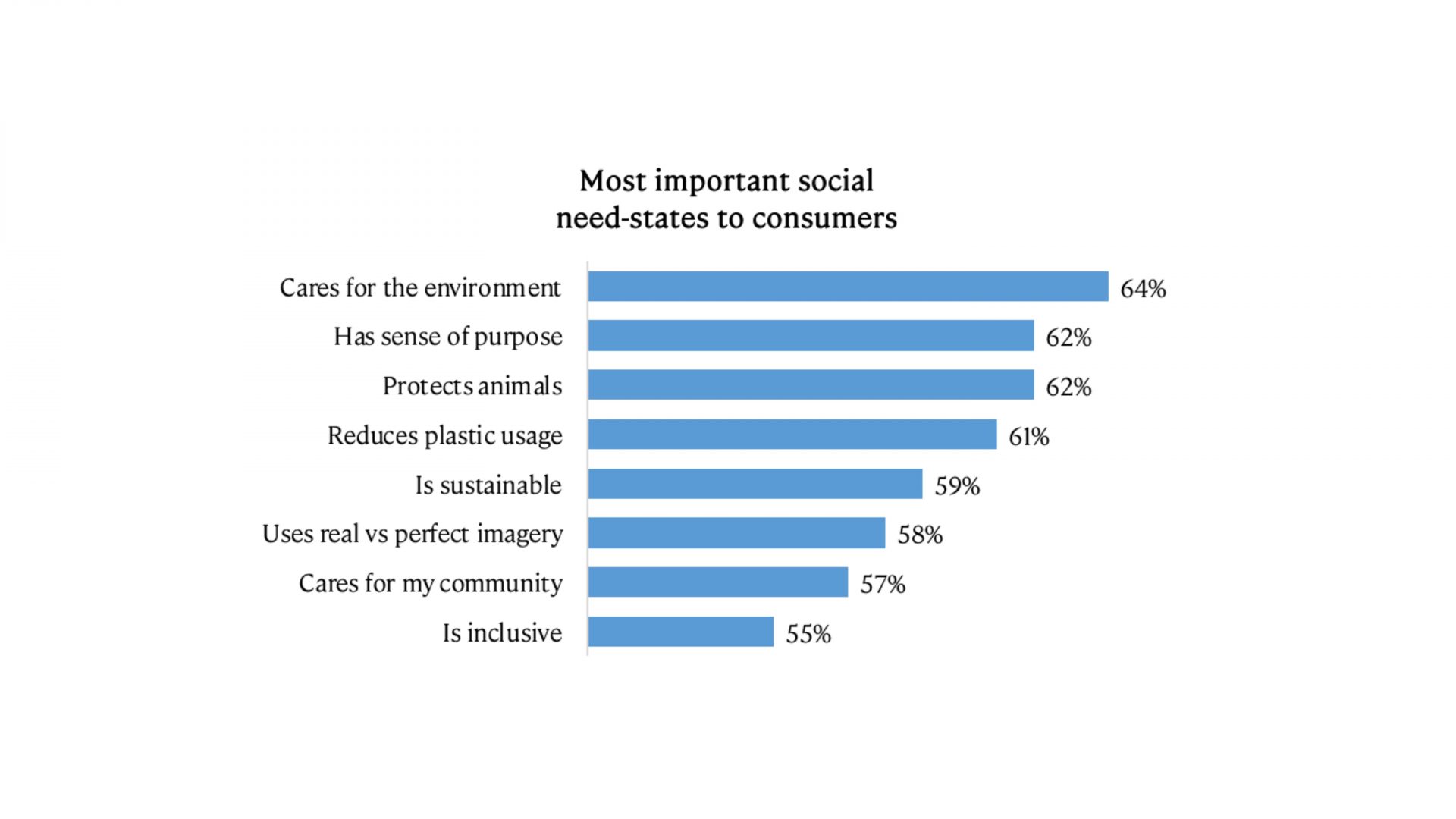
The Digital Revolution is rising on the agenda for boards all over the world. However, our experience to date had been that many examples of digital transformation had been solely focused on delivering cost savings, and the more functional benefits to the end customer.
Yet human centricity in this next revolution may well make the difference between success and failure for a brand, and so through our research on this topic in both the US and UK, we wanted to show that there was an alternative approach and to help brands understand that there are greater gains to be had when you consider the humans who are interacting with this tech.
Companies need to look beyond the functional flow into the emotional flow to provide a human centric digital experience.
Firstly, what is ‘functional flow’ when it comes to tech?
Enhanced tech generally offers a strong functional flow – all about ease, advancement and enhancement – it offers convenience, speed and a wealth of knowledge at your fingertips. The friction often exists in the overall customer experience (‘the emotional journey’) particularly if the transaction does not turn out to be as straightforward as expected. This is where tech lets us down, whether it’s the hassle of returns, slow responses or digital loops, frustrations emerge, and solutions are not easily provided to the consumer.
65% believe companies have lost touch with humans. Brands have a responsibility to take accountability for errors and solving problems, easing the ‘friction’ in the digital customer journey, in the same way they would be in an offline scenario. Think when a customer speaks to someone face to face, they’re able to have solutions and assistance readily available to them – why should the online experience be any different?
Many companies are taking this phygital strategy approach to enhance their brand experience. The objective is to bring the best parts of the physical customer experience into the digital world, and vice versa.
And it’s clear there is a need to address the tech / humanize the customer experience balance. Don’t just take our word for it…
- 79% of people think that reaching a human customer service representative is like hitting the jackpot
- 82% of people agree that brands/companies need to balance tech and innovation with the human element
- 57%would agree that the user experience is WORSE because of digitization
- 72% feel tech has created distance between companies and their customers
Brands have a huge opportunity to get ahead of their competition, simply by finding the right balance of a hybrid/personalized approach when it comes to integrating tech. We’ve provided the 3 identified ‘needs-states’ we recommend that all brands consider when implementing any tech into their digital strategy:
1. Functional needs – speed, ease, convenience
We’ve acknowledged the functional needs of the consumer earlier in this article, and one way to deliver on this is chatbots. Chatbots are great for those quick, easy interactions, and can provide speed and convenience – and it’s no surprise that Gen Z and Millennials are driving the demand for this feature online. However, they can also be frustrating in many situations. Techs great…until it’s not. Companies need to offer a hybrid approach, with access to human customer service reps as and when needed, and to avoid the digital loop of doom.

2. Emotional needs – trust, valued, in control.
Its important people feel they are valued and understood. There is also a desire to be able to have choices and control. We don’t all fit into the one box and companies that recognize that will win over those that don’t. Catering to different tech literacy levels is key to ensuring a confident and calm digital experience. There needs to be a human element to engage and induce trust and it’s all about taking responsibility for errors and actions by being reachable and responsible.

3. Social needs – transparency, aligns with personal values, inclusivity
Providing transparency around products / services and showing the people behind the tech will help gain social credits. While some may push aside their morals for the sake of a quick / cheap buy, being ethical is still top of the list. Sustainability is still a growing factor, and likely to continue to rise in importance over the next few years. Younger generations (Gen Z and Millennials) are more affected by brands using the ‘perfect imagery’ and therefore rate using real imagery higher in importance than other generations. It pays to be human.

With over half of respondents scared for the future generations, when they think of how tech will impact their lives, we encourage you to think about:
- What does the future hold for your business or brand?
- How well do you know your consumers?
- What can you do to get one step ahead of ensuring the tech your brand uses are human-centric?
We’re experts in market research, brand & digital strategy. We conducted our own proprietary research into the human cost for digital transformation – and we have so much more to share than just the insight demonstrated here. Our aim with insights & data is to empower confident decision making, supported by strategy, expertise and fresh thinking. Get in touch for more information and to speak to an expert.


